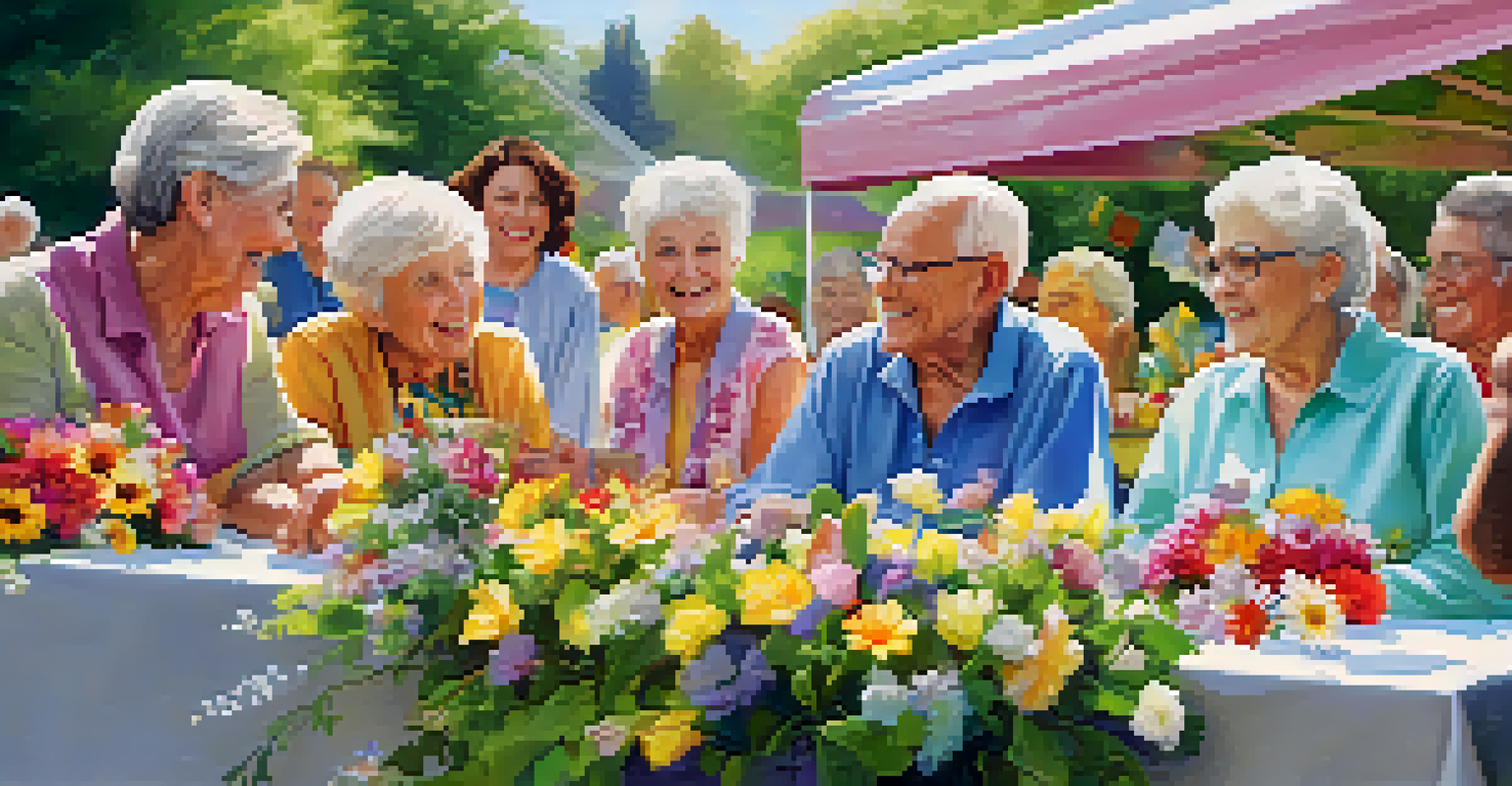Healthy Aging: The Role of Personal Safety Measures

Understanding Personal Safety in the Context of Aging
As we age, personal safety becomes a crucial aspect of maintaining our independence and well-being. It encompasses not just physical security but also emotional and mental safety. By ensuring a safe environment, seniors can enjoy their lives to the fullest, free from unnecessary worries.
Safety isn't just a policy; it's a state of mind.
Consider personal safety measures like home modifications, which can significantly reduce the risk of falls—a leading cause of injury among older adults. Simple adjustments, such as installing grab bars in bathrooms or ensuring adequate lighting, can make a world of difference. These changes not only enhance safety but also boost confidence in daily activities.
Moreover, personal safety extends beyond the home. Regular check-ins with family or friends can provide emotional reassurance for seniors living alone, fostering a sense of connection and security. By prioritizing safety, seniors can embrace aging with dignity and peace of mind.
The Importance of Home Safety Assessments
Conducting a home safety assessment is an essential step toward healthy aging. This process involves evaluating the home environment to identify potential hazards that could lead to accidents. By recognizing these risks, seniors can take proactive measures to mitigate them and foster a safer living space.

For instance, ensuring that pathways are clear of clutter and that rugs are secured can help prevent trips and falls. Additionally, having emergency tools—like a medical alert system—readily available can provide reassurance and prompt assistance in case of an emergency. These small adjustments can lead to significant improvements in safety and overall well-being.
Home Safety Enhancements Matter
Simple home modifications, like adding grab bars and improving lighting, can significantly reduce the risk of falls and enhance seniors' confidence.
Engaging family members in this assessment can also be beneficial. They can offer insights and support in implementing necessary changes. Together, they can create a safer environment that promotes independence and enhances the quality of life for seniors.
The Role of Technology in Enhancing Senior Safety
Technology plays a pivotal role in promoting personal safety for seniors. From wearable devices that monitor health metrics to smart home systems that control lighting and security, the right technology can greatly enhance a senior's safety. These tools not only provide safety but also foster independence.
The greatest wealth is health.
For example, fall detection devices can alert emergency services if a senior falls and is unable to get up. Similarly, smart home technology can allow seniors to manage their environment with ease, adjusting lights and locks from their mobile devices. This level of control can significantly reduce risks associated with aging.
Furthermore, technology can facilitate communication with loved ones, ensuring that seniors feel connected and supported. Video calls or messaging apps allow for regular check-ins, promoting mental and emotional well-being as well. In this way, technology becomes an ally in the journey of healthy aging.
Building a Support Network for Safety
A robust support network is key to ensuring personal safety for seniors. This network can include family, friends, neighbors, and local community resources. By fostering strong relationships, seniors can create a safety net that enhances their quality of life.
Regular social interactions can reduce feelings of isolation and loneliness, which are common in older adults. When seniors feel supported, they are more likely to engage in activities that promote mental and physical health. For instance, participating in community events can provide both social engagement and a sense of belonging.
Technology Boosts Senior Safety
Wearable devices and smart home systems empower seniors to manage their safety and maintain independence, making technology a vital ally in aging.
Encouraging family members to take an active role in a senior's life can also bolster safety. Simple acts, such as accompanying them on errands or helping with household chores, can make a significant difference. This collaborative approach fosters a sense of security and reinforces the idea that safety is a shared responsibility.
Emergency Preparedness for Older Adults
Emergency preparedness is a vital aspect of personal safety for seniors. Having a plan in place can alleviate anxiety during unexpected situations, such as natural disasters or medical emergencies. By taking the time to prepare, seniors can feel more in control and secure.
Creating an emergency kit stocked with essential supplies is a good starting point. This kit should include items like medications, a flashlight, water, and important documents. Additionally, having a clear plan of action—such as knowing evacuation routes or having a communication strategy—can provide peace of mind.
Involving family members in this preparedness plan is also beneficial. They can help seniors understand the steps to take and ensure they are comfortable with the plan. This teamwork reinforces the importance of safety and readiness in the face of potential emergencies.
Physical Health and Personal Safety Connection
Physical health is intricately linked to personal safety in older adults. Regular exercise and a balanced diet not only improve overall health but also enhance balance and coordination, reducing the risk of accidents. By prioritizing physical well-being, seniors can significantly boost their safety.
Participating in activities like yoga, swimming, or walking can strengthen muscles and improve flexibility. These types of exercises are particularly effective in helping older adults maintain their mobility and independence. A little movement can go a long way in preventing falls and injuries.
Support Networks Enhance Safety
Building strong relationships with family and community can provide essential emotional support and practical assistance, enhancing the overall safety of seniors.
Moreover, adopting a nutritious diet supports both physical and mental health. Foods rich in antioxidants and vitamins can improve cognitive function, further promoting safety by enhancing decision-making and awareness. Healthy aging truly begins with a commitment to physical well-being.
Mental Well-being: A Pillar of Personal Safety
Mental well-being is a cornerstone of personal safety for seniors. A positive mental state enhances resilience and coping skills, making it easier to navigate challenges. When seniors feel mentally strong, they are more equipped to make safe choices in their daily lives.
Engaging in activities that promote mental health, such as puzzles, reading, or socializing, can help keep the mind sharp. Furthermore, mindfulness practices like meditation can reduce stress and anxiety, contributing to a greater sense of safety and control. A healthy mind fosters a healthy body.

Encouraging open discussions about mental health within families can also break down stigma and promote understanding. This openness allows seniors to seek help when needed, reinforcing the idea that mental well-being is just as important as physical safety. Together, these elements create a holistic approach to healthy aging.